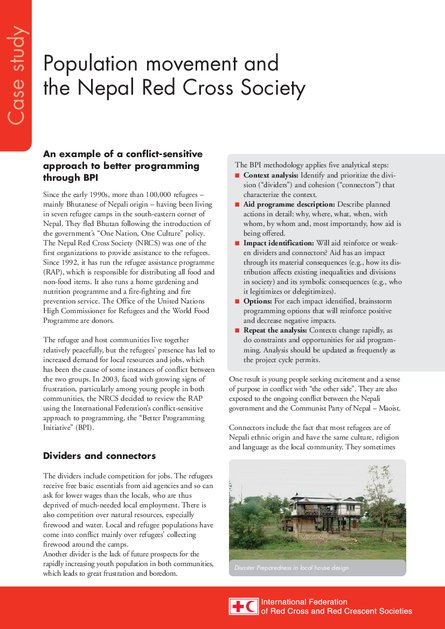
Since the early 1990s, more than 100,000 refugees – mainly Bhutanese of Nepali origin – having been living in seven refugee camps in the south-eastern corner of Nepal. They fled Bhutan following the introduction of the government’s “One Nation, One Culture” policy. The Nepal Red Cross Society (NRCS) was one of the first organizations to provide assistance to the refugees. Since 1992, it has run the refugee assistance programme (RAP), which is responsible for distributing all food and non-food items. It also runs a home gardening and nutrition programme and a fire-fighting and fire prevention service. The Office of the United Nations High Commissioner for Refugees and the World Food Programme are donors. The refugee and host communities live together relatively peacefully, but the refugees’ presence has led to increased demand for local resources and jobs, which has been the cause of some instances of conflict between the two groups. In 2003, faced with growing signs of frustration, particularly among young people in both communities, the NRCS decided to review the RAP using the International Federation’s conflict-sensitive approach to programming, the “Better Programming Initiative” (BPI).